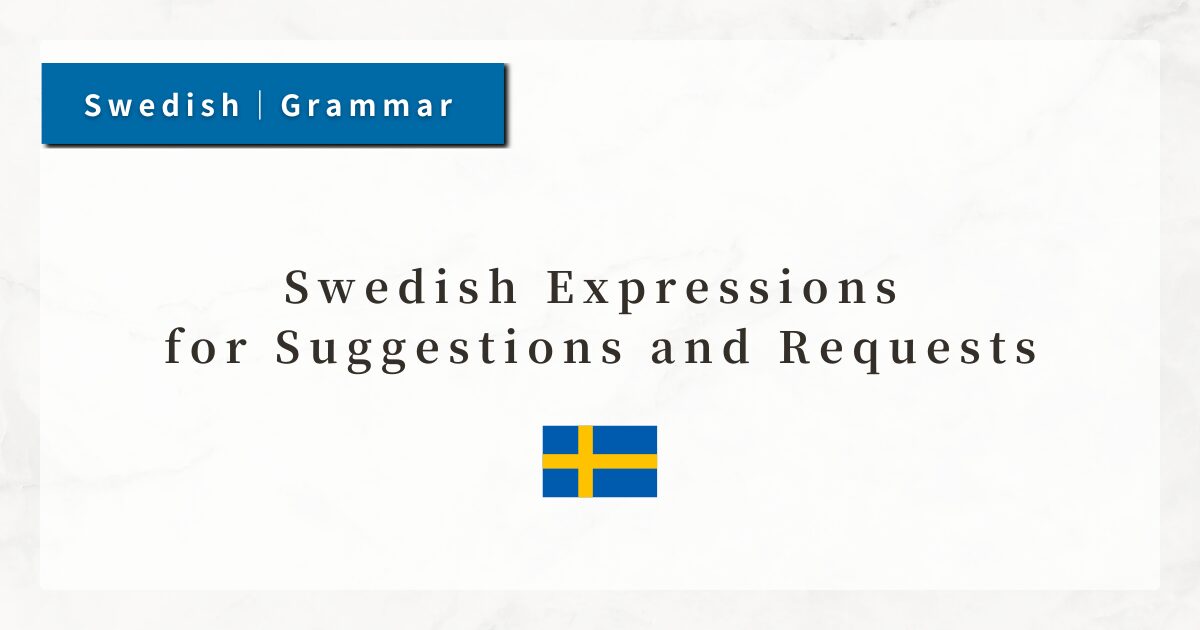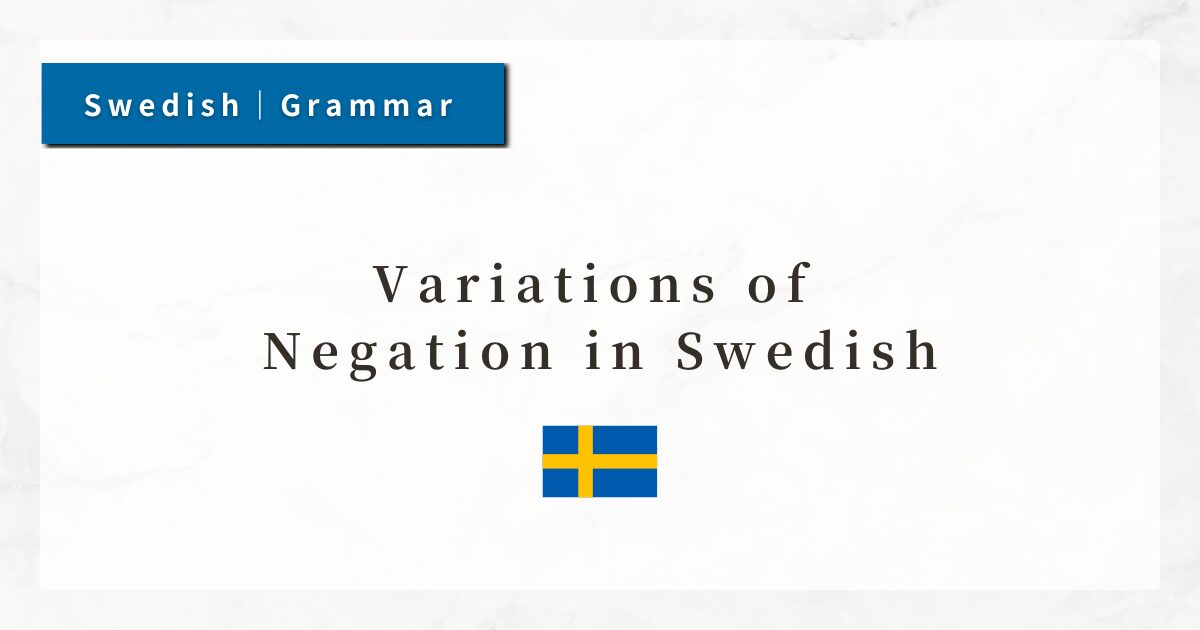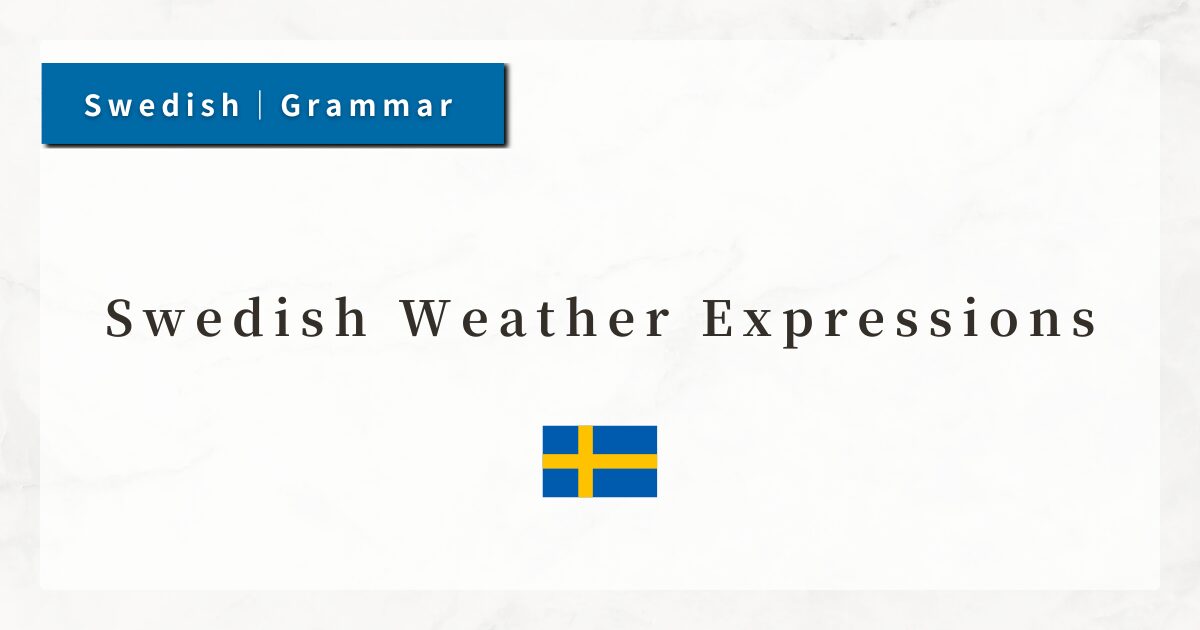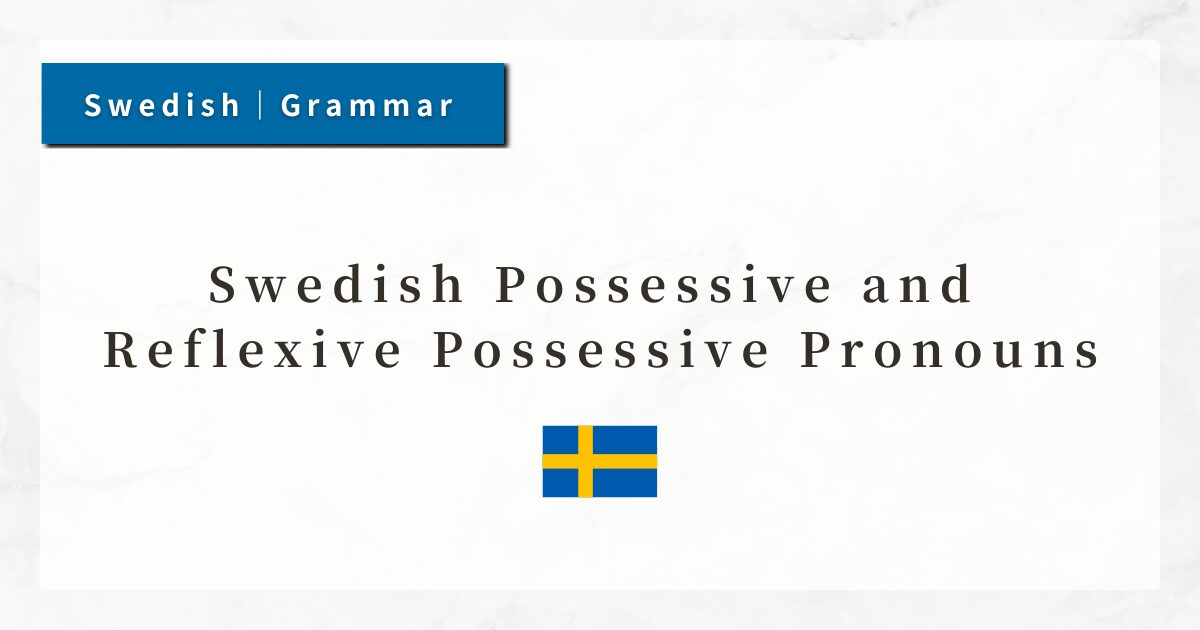#30 Swedish Past Perfect|Usage and Example Sentences

In Swedish, the past perfect tense is used to describe an action that had already taken place before another event in the past. For example: “I had bought the ticket before the movie started.”
When there are two or more events in the past, the past perfect makes the sequence of events clear.In Swedish, this tense is formed with the auxiliary verb hade (had) and the supine form of the main verb.
In this lesson, I will explain the structure, usage patterns, and key points of the past perfect tense in Swedish.
Structure of the Past Perfect: hade + Supine
The Swedish past perfect is formed as: Subject + hade + supine.
The auxiliary hade is the past tense of ha (to have). Unlike in English (had vs. has/have), Swedish always uses hade for all subjects.
- Jag hade ätit.
(I had already eaten.) - Hon hade gått hem.
(She had gone home.) - Vi hade läst boken innan filmen började.
(We had read the book before the movie started.)
By using the past perfect, the temporal relationship between two past events becomes clear.
2. How to Form the Supine
The supine is the verb form used in perfect tenses (present perfect and past perfect). It is generally formed as “verb stem + -t”, but irregular patterns are common.
Regular verbs
Regular verbs form the supine by adding -t / -tt to the stem.
| Infinitive | Meaning | Supine | Formation |
|---|---|---|---|
| tala | to speak | talat | stem tala + -t |
| köpa | to buy | köpt | stem köp + -t |
| bo | to live | bott | stem bo + -tt |
Irregular verbs
Many frequent verbs are irregular and must be memorized. Regular review and practice with verb lists are essential for mastering them.
| Infinitive | Meaning | Supine |
|---|---|---|
| gå | to go | gått |
| se | to see | sett |
| göra | to do | gjort |
| komma | to come | kommit |
| dricka | to drink | druckit |
3. Main Uses of the Past Perfect
The Swedish past perfect is typically used in two situations:
3-1. Completed action before a point in the past
When a clause expresses “by the time” or “before,” the past perfect is used.
- När vi kom till stationen, hade tåget redan gått.
(When we arrived at the station, the train had already left.) - Hon hade redan stängt av datorn när jag ringde.
(She had already turned off the computer when I called.)
3-2. Past experience up to a certain point
It also describes experiences someone had before a given moment in the past. This emphasizes an experience that existed prior to another past event.
- Jag hade aldrig sett snö innan jag flyttade till Sverige.
(I had never seen snow before I moved to Sweden.) - Han hade bott i Paris i fem år innan han flyttade till Tokyo.
(He had lived in Paris for five years before moving to Tokyo.)
4. Difference from the Present Perfect
Swedish also has the present perfect (har + supine), used for past actions that remain relevant to the present.
By contrast, the past perfect (hade + supine) refers to an action completed before another moment in the past.
| Tense | Example | Translation |
|---|---|---|
| Present perfect (har gått) | Jag har gått hem. | I have gone home. (and I am still away) |
| Past perfect (hade gått) | Jag hade gått hem. | I had gone home. (already, at some point in the past) |
Thus, the past perfect clarifies the time sequence when neither the simple past nor the present perfect can fully convey the meaning.
It is especially common in narratives, reports, or storytelling, where the chronology of events must be clear.
5. Summary
- The Swedish past perfect is formed with hade + supine.
- It expresses actions or states that occurred before another past event.
- Though the structure is simple, understanding context and knowing verb supine forms is essential.
- Do not confuse it with the present perfect. Always consider the reference point in time when choosing between them.




